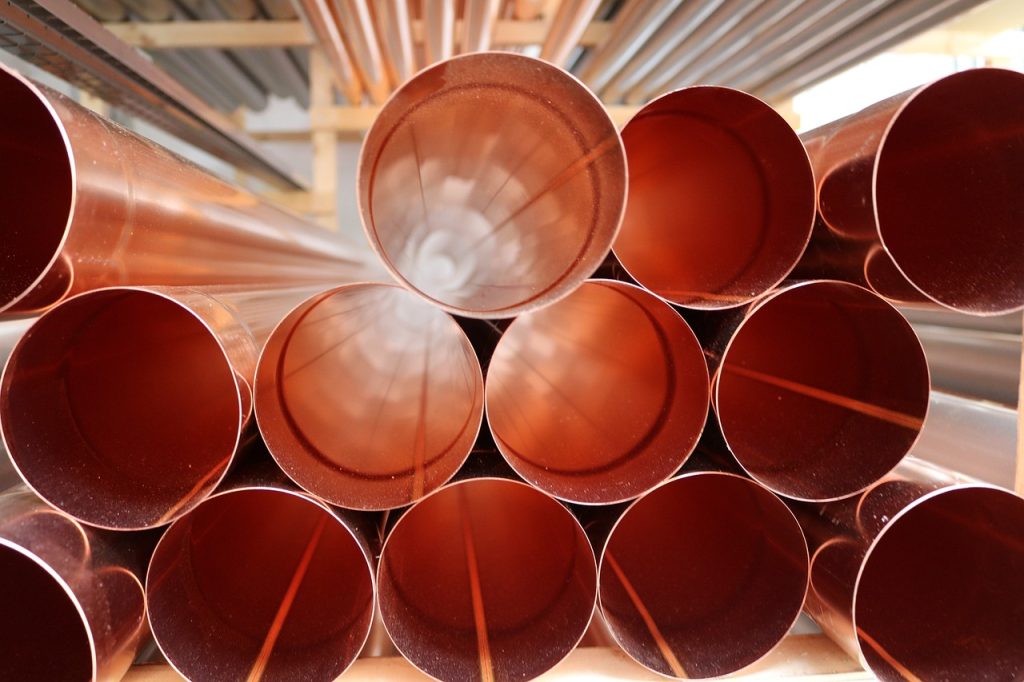Why Copper Products Are Necessary for Electric Applications and Effective Electrical Wiring
Why Copper Products Are Necessary for Electric Applications and Effective Electrical Wiring
Blog Article
How Copper Products Add To Sustainable Practices in Different Markets
Copper products are increasingly recognized for their significant contributions to lasting techniques throughout numerous industries, driven by their intrinsic buildings such as recyclability, sturdiness, and efficiency. In renewable resource systems, for instance, copper boosts the capability of solar and wind modern technologies, while its application in building and construction decreases waste through long life. Moreover, the product's antimicrobial attributes use appealing benefits in medical care settings. As markets seek to take on even more lasting practices, the duty of copper could prove essential in achieving environmental objectives. What ramifications might this have for future developments in sustainability?
Copper in Renewable Resource
Copper plays a vital duty in the innovation of sustainable power technologies, working as a vital conductor in various applications. Its outstanding electrical conductivity and resistance to corrosion make it a suitable material for electrical circuitry, which is essential in photovoltaic panels, wind generators, and power storage space systems. In solar photovoltaic or pv systems, copper is used in the interconnections and circuitry, making it possible for effective energy conversion from sunshine to electricity.
In wind power, copper is indispensable to the generators and transformers that transform kinetic energy into electrical power, making sure optimal efficiency and integrity. In addition, the need for electrical vehicles (EVs) is increasing, with copper being a key element in batteries, electric motors, and billing framework. The change to EVs significantly enhances the demand for copper, as these lorries normally utilize four times more copper than traditional internal burning engine cars.
As the globe looks for to minimize climate adjustment and transition to lasting power sources, copper's role becomes significantly essential. The material not only enhances the efficiency and resilience of eco-friendly power systems but likewise supports the broader goal of lowering greenhouse gas discharges and advertising a lasting future.
Eco-Friendly Construction Materials
Over the last few years, there has been a remarkable change in the direction of the fostering of environmentally friendly building and construction materials in action to expanding environmental problems. This modification is encouraged by the demand for lasting alternatives that lessen eco-friendly impacts while preserving architectural integrity and aesthetic charm.
Copper, understood for its resilience and recyclability, has become a principal in this market. It can be used in roof covering, pipes, and electric systems, adding to power performance and reducing waste. Copper's long life suggests less replacements over time, more boosting its sustainability account.
Additionally, materials such as bamboo, reclaimed wood, and recycled steel are getting popularity. These alternatives not only offer reduced ecological effect but likewise promote resource preservation. As developing codes increasingly highlight sustainability, home builders and architects are incorporating these products right into their projects, promoting development in style.
The boosting fostering of eco-friendly building and construction materials shows a broader commitment to sustainability in the built setting. By focusing on these materials, the construction sector can substantially reduce its carbon impact, line up with regulatory requirements, and sustain a healthier ecosystem for future generations. This trend marks a critical step towards a more lasting future in building and construction.
Copper's Duty in Medical care
Recent research studies have actually highlighted the considerable function of copper in health care setups, particularly due to its antimicrobial buildings. Copper surfaces have actually been revealed to lower the existence of virus, including bacteria and viruses, by as much as 99.9% within a brief duration. This impressive effectiveness makes copper a very useful material for high-touch surface areas in health centers, such as doorknobs, bed rails, and IV posts, thereby adding to enhanced infection control steps.
In addition to its direct antimicrobial results, copper likewise contributes in the wider context of healthcare facility sustainability (Copper Products). By including copper into clinical tools and home furnishings, medical care facilities can lower the incidence of healthcare-associated infections (HAIs), which not only Visit This Link boosts client end results however also reduces the prices related to extended health center keeps and additional therapies
Furthermore, copper's durability and recyclability line up with sustainable methods, enabling accountable resource administration. As medical care systems increasingly focus on both person safety and environmental stewardship, the assimilation of copper items is becoming a lot more widespread. This twin benefit highlights copper's essential contribution to a healthier, much safer, and extra sustainable healthcare atmosphere.
Sustainability in Transport

Moreover, copper's toughness and corrosion resistance add to the long life of transport facilities (Copper Products). In rail systems, for circumstances, copper parts improve the reliability and effectiveness of signaling and power systems, important for lowering delays and energy intake. Furthermore, copper's role in renewable resource systems, such as solar and wind, supports lasting transport remedies by supplying tidy energy for electric transportation choices
Investments in copper technology not only foster sustainability but also promote economic growth and job development in eco-friendly industries. As markets strive to satisfy stringent ecological regulations, the application of copper products in transport emerges as a critical technique in accomplishing sustainability goals and promoting a cleaner, much more effective future.
Copper and Circular Economy
As the world increasingly accepts sustainability, the duty of copper in the circular economic situation comes to be ever extra considerable. Copper's inherent buildings-- such as its recyclability, conductivity, and longevity-- placement it as a crucial product in a resource-efficient economic situation. The circular economic situation intends to lessen waste and make best use of source use with recycling and reusing products, and copper excels in this regard.
The steel can be recycled forever without loss of quality, making it a suitable candidate for sustainable methods throughout different industries, consisting of construction, electronics, and eco-friendly energy. By recycling and recovering copper from end-of-life products, industries can substantially reduce the demand for virgin products, therefore decreasing ecological influences associated with mining and handling.
Furthermore, the assimilation of copper right into circular economy structures not just preserves sources yet additionally promotes development. Services that prioritize copper recycling contribute to a more sustainable supply chain, improving their competition while straightening with governing demands and customer choices for eco liable items.
Conclusion
To conclude, copper items dramatically add to sustainable practices throughout several sectors. Their vital function in boosting renewable resource innovations, promoting eco-friendly construction products, supporting infection control in healthcare, assisting in go to the website lasting transport, and embodying the concepts of a circular economic climate emphasizes the convenience and value of copper. By incorporating copper right into different applications, sectors can achieve greater performance, minimize ecological effect, and align with worldwide sustainability goals, eventually cultivating a more sustainable future.

Copper's superb conductivity makes it a favored material in electrical automobile (EV) systems, improving energy performance and efficiency. Furthermore, copper's role in eco-friendly energy systems, such as solar and wind, sustains sustainable transportation services by giving clean energy for electrical transit options.
Their necessary function in enhancing sustainable power innovations, advertising environment-friendly construction products, sustaining infection control in healthcare, promoting lasting transport, and symbolizing the concepts of a circular economic climate emphasizes the flexibility and significance of copper.
Report this page